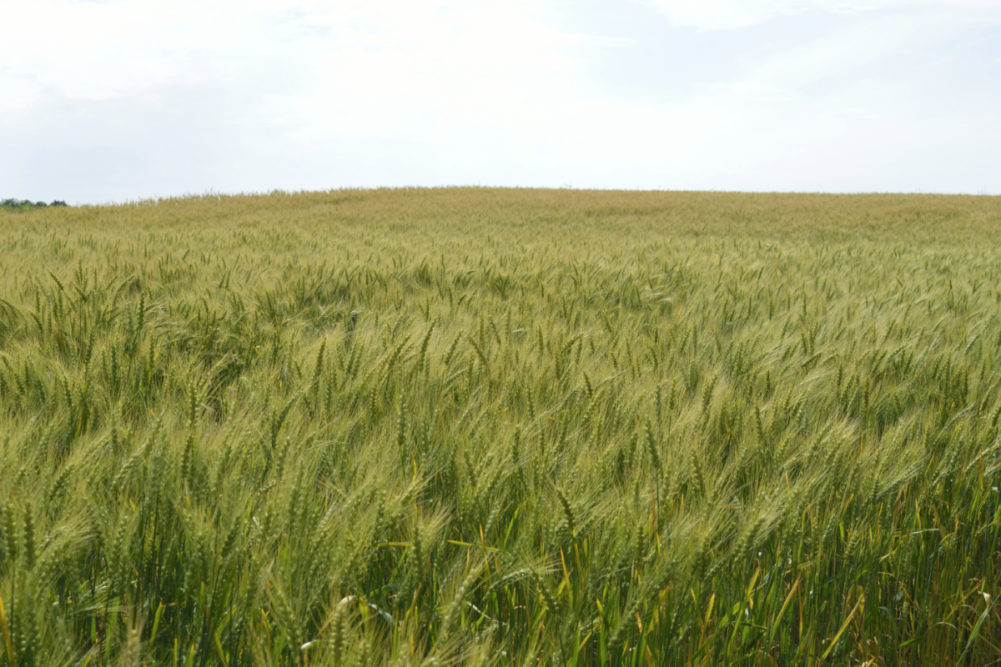KANSAS CITY, MISSOURI, US — The spring wheat harvest of the northern Plains was expanding rapidly with the hot and dry conditions that wreaked havoc with crop yields and production prospects now speeding combines along. The US Department of Agriculture in its weekly Crop Progress report said the spring wheat crop was 17% harvested by Aug. 1 compared with 3% a week earlier and 8% as the recent five-year average for the date. The harvest was furthest along in South Dakota, where 53% of the crop was harvested by Aug. 1 compared with 37% as the 2016-20 average for the date. The North Dakota harvest was 6% completed at the beginning of the week compared with 4% as the average progress for the date. The harvest made great strides since the USDA Crop Progress report, and the rapid pace was expected to continue into the weekend and next week.
The North Dakota Wheat Commission in its weekly harvest report said while the North Dakota harvest has just begun, producers in some areas where combining was underway indicated they were seeing fairly strong test weight values, 60 pounds per bushel or higher, and high protein, ranging from 14% to 18% in the early harvest. The NDWC said producers in areas that received more moisture than most this growing season were seeing yields close to average. But the bulk of the state’s crop was expected to show yields well below normal. The USDA in its July Crop Production report forecast the average North Dakota wheat yield at 28 bushels per acre, the lowest since 2002. Participants in the Wheat Quality Council’s spring wheat tour forecast the North Dakota average yield a bit higher at 29.1 bus per acre, which the NDWC observed still would be a drop of about 20 bushels per acre from 2020.
The NDWC said the condition of the crop remaining to be harvested remained low with only 10% of the nation’s spring wheat crop rated in good to excellent condition. Nearly two-thirds was rated in poor to very poor condition.
Jim Peterson, policy and marketing director for the NDWC, suggested average yield may be a bit above the USDA forecast partly on account of the number of planted acres that have been abandoned. Peterson said abandonment this year may be as high as 10% or 15% compared with 5- or 10-year averages of 2.5% to 3%. Abandonment in 2002, another drought year, was about 14%, and in 1988, which saw a drought even more severe than this year or 2002, abandonment reached 20%.
A spring wheat merchandiser observed most producers were storing their newly harvested spring wheat in bins on farm and not yet taking it to elevators. Basis levels at country elevators have firmed in order to draw harvest wheat, and some elevators have offered deferred pricing options that would allow farmers to store their wheat at the elevator and price it later. But for now, producers’ attention was getting their crop in.
The merchandiser said farmers in eastern North Dakota and western Minnesota, especially in the Red River Valley, were seeing yields above expectations. Fields there where producers had feared they’d see yields of about 30 bushels per acre in instances were turning out 40 to even 50 bushels per acre. But yields fell off sharply to the west, and in the western portions of the state, yields were as low as advertised at 15 to 25 bushels per acre with more than average abandonment.
While all eyes were trained on the spring wheat harvest, the winter wheat harvest was nearly completed. The USDA said the harvest was 91% completed by Aug. 1 compared with 84% a week earlier and 86% as the 2016-20 average for the date. Drought conditions made for rapid progress in the Pacific Northwest, with the harvest 47% completed in Idaho (24% as the average progress for the date), 83% in Oregon (57%) and 74% in Washington (35%).
The Michigan soft winter wheat harvest was 93% completed compared with 85% as the average for the date. The soft red winter wheat harvest was wrapped up or nearly completed in the other Central states.
US Wheat Associates in its July 30 harvest report said the soft red winter wheat production region continued to have adequate soil moisture with seeding likely to begin by September. Considering the quality of the 2021 crop analyzed to date, USW said, “Falling number (294 seconds) is similar to last year’s (319 seconds) with lower scores from Arkansas and North Carolina. Test weight average is relatively unchanged from last year at 59.57 pounds per bushel. The thousand kernel weight (34.3 grams) is good this year, and the crop grades No. 2 soft red winter again this year.”
Vomitoxin was very low and not an issue in most areas.




